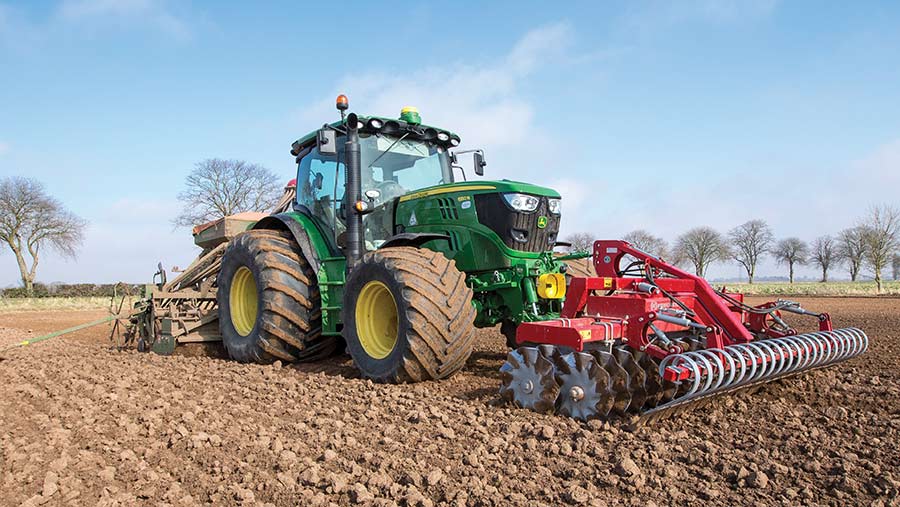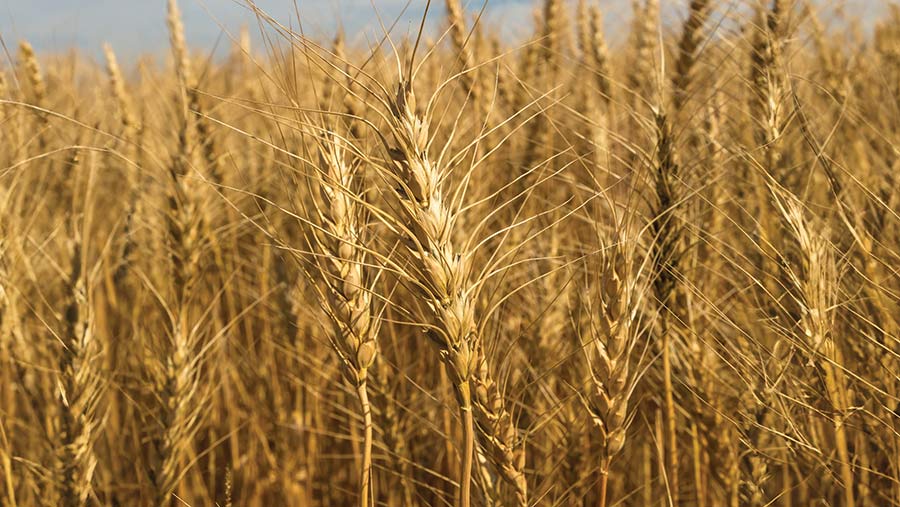What spring crops should farmers consider in 2024?
 © GNP
© GNP Spring cropping choice is set to be more complicated in 2024 as farmers assess the impact of the rain-hampered autumn drilling season with questions over the viability of some crops that made it into the ground.
“A very large area of what has been drilled will not survive through to harvest,” says Graham Redman, author of the Farm Management Pocketbook.
“Many growers might look to scrap the crop and restart with spring crops in the new year.”
In addition, a large area of wheat that would normally have been drilled by now has not been planted and might not get drilled, as fields are now too wet.
See also: PGRO adds 12 new pea and bean varieties to 2024 list
“These two factors combined mean that we are expecting a very large area of spring crops to be planted this coming season,” he says.
This has had a knock-on effect on spring seed availability. “Merchants are reporting that spring seed is more or less sold out. And a lot of growers are likely to plant their own saved spring seed as a response.”
However, if growers plan to use saved seed they should undertake the relevant seed tests, including germination, and adjust their seed rates accordingly.
“Remember, selling seed to another farmer to use is illegal – even if royalties are paid,” says Graham.
Gross margins
And when it comes to the all-important gross margins, also consider how the crops fit within the farm system.
“The gross margin is important for business planning, but remain aware that crop values can change quickly, so selecting the best crop for the farm also depends on agronomic and market factors.”
Looking at the season so far, it was all shaping up nicely from harvest to October, says Damian McAuley, senior agronomist at Indigro and member of the Association of Independent Crop Consultants.
“Then the rain came in and it didn’t stop – ground conditions have been wet since 10 October.”
This has caused problems on the headlands and where slug infestation has been high, even after beans, he says.
“And while blackgrass control has been very good, where we may have a problem is on the thinner areas, which will potentially allow problems later into the spring,” he says.
“But a thin, even crop can still realise a very good crop – so it’s not game over.”
Timing
When it comes to sowing spring crops, Damian advises growers to drill as early as ground conditions will allow.
“I have heard about people delaying for blackgrass emergence, but they’ve delayed into the spring anyway and the drilling window tends to be very short – we go from horribly wet conditions, to too dry.
“Also, have a look at seed rates; generally, people drill spring crops a little too thin, so keep seed rates up, particularly if drilling into a cover crop.
“This is the same advice whether going early or late. If going early, it will likely be into cold conditions, and if going late, there are fewer tillering opportunities and a shorter growing season.”
Echoing Graham’s advice when it comes to saved seed, always test, he says. “I would test for the main seedling diseases depending on what the crop is.
AHDB has good data on what the disease thresholds are; it might not need dressing, just a reclean. Above the threshold, it might need a single-purpose seed treatment.
“Getting a proper germination test can take a while, so don’t leave it too late.”
Damian has noticed a trend of less spring wheat being grown.
“Spring wheat needs to be drilled early, because it is slow out of the blocks, and for that reason it’s not very competitive against blackgrass.
“Spring barley is easy to grow, is very competitive and cheaper than spring wheat due to the low nitrogen requirement.”
Spring oats
Damian has also seen a move from growing oilseed rape to spring oats.
“Oats are very competitive against blackgrass; above and below ground, cheap to grow, and there’s a slightly wider drilling window – although I would still encourage people to drill oats as early as possible.
“Nitrogen requirements are low, and it tends not to suffer too much from diseases. It has a good gross margin and some good yields in the past few years.
“And the loss of herbicides for spring oats relates mainly to residual, pre-emergence herbicides, which I don’t tend to use, so this doesn’t affect my clients’ strategy decisions, and it does help the gross margins.”
A lot of growers are bolting on stewardship or sustainable farming incentive options.
“If growing a low input cereal after a winter cover crop, you’re getting £365/ha before even starting. From a gross margin point of view, that gets you up to winter wheat territory.
“For people not in a scheme this could be quite an interesting moment for them to have a look at the options they could bolt on to a spring crop,” notes Damian.
“We’re too late for winter cover, but certainly could do the non-insecticide option, which is a useful bit of extra margin.
“Margins have tightened as commodity prices have fallen and input prices have gone up, so winter cereal margins have come down a little bit and spring cereals have moved up a bit.”
Top tips for spring crops:
- Drill as early as possible
- If planning a spring crop, consider a cover crop first
- Be ready to go as soon as conditions allow
- Keep seed rates up
- See what SFI options could be bolted on to boost margins
Gross margins compared for the key spring cropping options in 2024 |
|||
|
Crop |
Output (£/ha) |
Variable costs (£/ha) |
Gross margin (£/ha) |
|
Spring wheat |
1,413 |
537 |
876 |
|
Spring malting barley |
1,307 |
395 |
913 |
|
Spring oats |
1,137 |
394 |
744 |
|
Spring oilseed rape |
979 |
328 |
650 |
|
Spring linseed |
858 |
283 |
575 |
|
Spring beans |
963 |
373 |
590 |
|
Blue peas |
1,180 |
363 |
817 |
|
Marrowfats |
1,357 |
508 |
849 |
| Source: 2024 Farm Management Pocketbook | |||
Niche options

Red wheat © Tim Scrivener
Due to the difficult establishment of winter crops, Nigel Padbury at Premium Crops expects a strong demand for niche spring options, although there are limitations in the size of the market, he warns.
He has seen interest in red wheat and naked oats so far. “High-protein spring wheats can be drilled later while not affecting the harvest date,” he says.
“Naked oats have the same agronomy as standard oats, with a February or March drilling date, but they have a premium for specialist markets.”
If blackgrass is a problem, a lot of growers are opting for canary seed, he says.
“The market for canary seed is pretty strong at the moment; some of our contracts are more than £450/t and we regularly see a 3t/ha yield.
“For a crop that is drilled quite late, it doesn’t need a lot of nitrogen, it’s very competitive in terms of weeds, and has few herbicide options.
Nigel highlights millet as another option for later drilling which tolerates a dry spring. “Like canary seed, it doesn’t need a lot of nitrogen and would fetch around £300/t,” he says.
Linseed is another avenue which may pay dividends.
“We have a very hungry buyer now, looking for ultra-high omega three varieties, so there are some strong contracts in excess of £500/t.
“It stacks up quite well in terms of gross margin, because 2.5t/ha is a reasonable target,” says Nigel.
But growers should make sure there is a contract in place before putting any niche crop in the ground.
“Make sure there’s an end market in place because there will be more to gain from that, than on the open market.”

